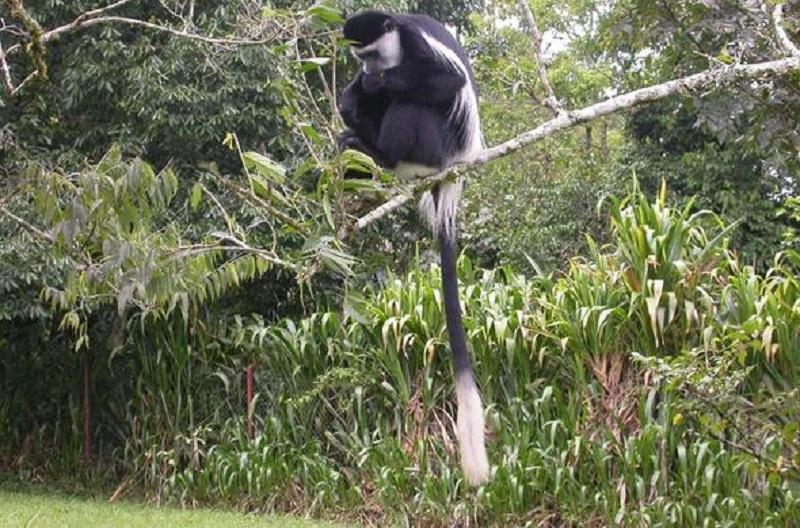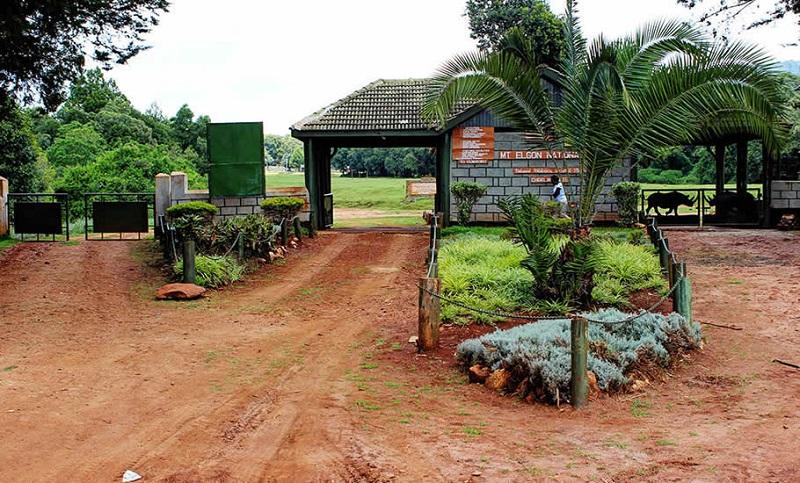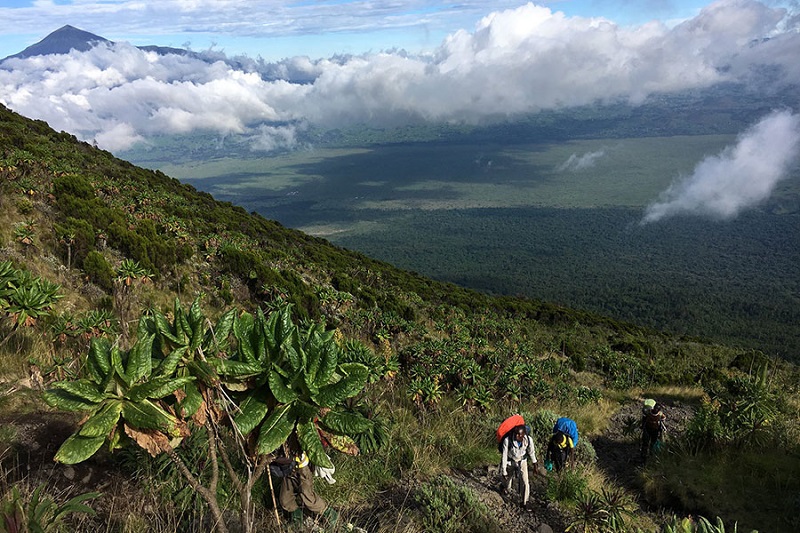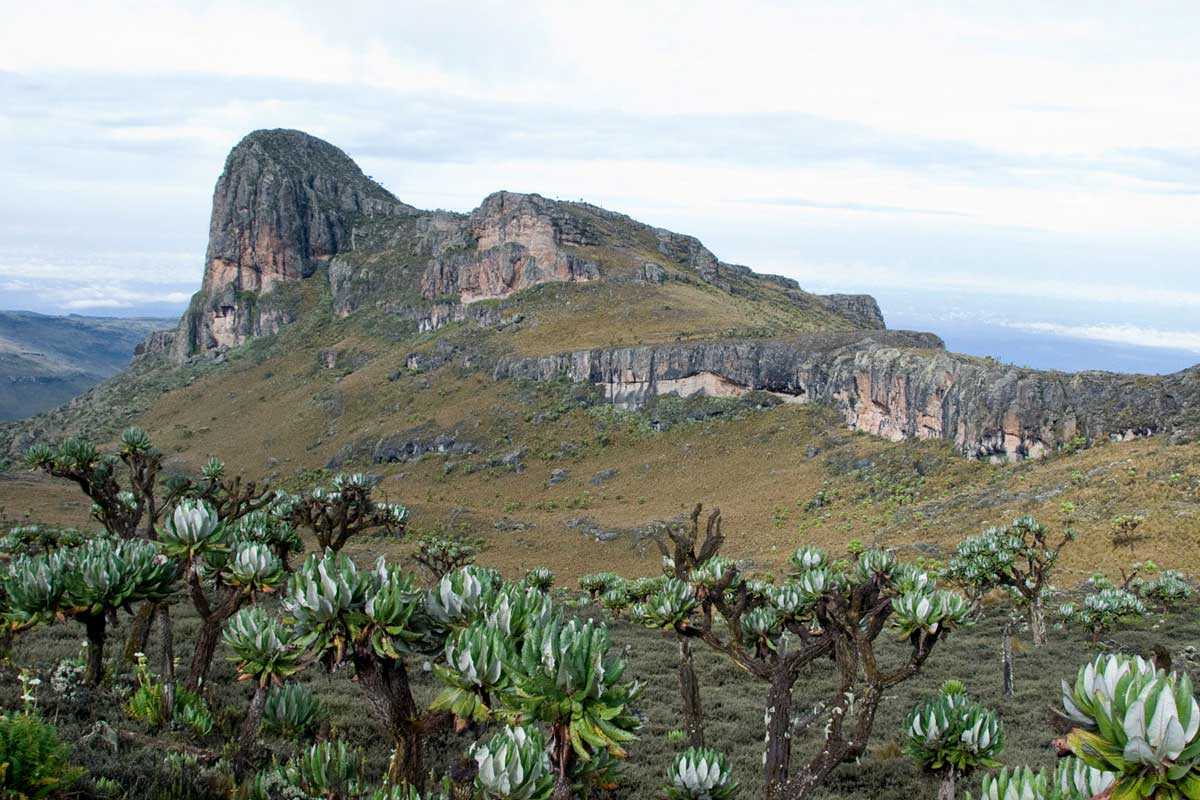Located in both Kenya and Uganda, Mount Elgon National Park is a stunning natural haven that showcases diverse landscapes and unique wildlife. The park, covering 169 square kilometers on the Kenyan side, was gazetted in 1968 and is home to one of the oldest volcanic mountains in East Africa.
Mount Elgon, which rises to an elevation of about 4,321 meters, has a caldera spanning 40 square kilometers, offering a dramatic backdrop to the park’s rich biodiversity. Visitors are drawn to the park for its less-traveled paths, stunning waterfalls, caves, and serene atmosphere, making it an excellent destination for those seeking both adventure and tranquility.
Please Download Our Mobile App here
Overview of Mount Elgon National Park
Mount Elgon National Park is not only known for its towering peak but also for its diverse ecosystems, ranging from lush montane forests to open moorlands. The park’s unique topography includes cliffs, deep gorges, and stunning caves, with Kitum Cave being particularly famous for its “salt-mining” elephants.
The landscape is dotted with beautiful waterfalls, such as the Chepnyali and Makungwa Falls, and the Suam Gorge offers dramatic scenic views. Beyond its natural beauty, Mount Elgon holds cultural significance for local communities who have lived around its slopes for centuries, contributing to the park’s rich heritage. The park is less crowded than other Kenyan reserves, allowing visitors to enjoy the pristine wilderness in relative solitude.
Wildlife in Mount Elgon National Park

Mount Elgon National Park hosts a wide variety of wildlife, including both mammals and birds. Among the most notable residents are the elephants, which are famous for their behavior of “mining” for salt deep inside the caves. These elephants carve into the rock walls with their tusks to access the mineral-rich salts they crave.
Buffaloes, leopards, bushbucks, and giant forest hogs are also commonly seen throughout the park. The montane forest and moorland habitats are home to various primates, including colobus and blue monkeys.
For birdwatchers, the park is a haven with over 240 bird species recorded, including the endangered lammergeier (bearded vulture), Tacazze sunbird, and the Jackson’s francolin. These species add to the park’s allure for ornithologists and nature enthusiasts alike.
Best Time to Visit Mount Elgon National Park
The best time to visit Mount Elgon National Park is during the dry seasons, which run from December to March and June to September. During these months, the weather is mild, and the trails are easier to navigate, making it an ideal time for hiking and wildlife viewing.
The wet seasons, from April to May and October to November, see heavier rainfall, which can make some parts of the park inaccessible due to muddy conditions. However, for those interested in birdwatching, the wet season is ideal as the rains bring a variety of migratory birds to the park. The dry seasons are also perfect for exploring the park’s caves and enjoying clear views from the mountain peaks.
Getting to Mount Elgon National Park

Mount Elgon National Park is easily accessible by road, with the nearest major town being Kitale, located about 42 kilometers away. From Nairobi, the park is roughly 400 kilometers, and the drive takes around 6 to 7 hours via the Eldoret-Kitale route. For those preferring to fly, there are domestic flights from Nairobi to Eldoret or Kitale airports, after which visitors can take a short drive to the park.
The park has several entry points, including Chorlim Gate on the Kenyan side, which is the main entry gate. Visitors can explore the park by car or on foot, with various trails available for both leisurely walks and more strenuous hikes up the mountain slopes.
Other Activities in Mount Elgon National Park
There is no shortage of activities for visitors to enjoy in Mount Elgon National Park. Hiking is one of the most popular activities, with several trails leading through the forest, up to the caldera, and to the summit of Mount Elgon. For the more adventurous, caving is a must-do activity, with Kitum, Chepnyali, and Makingeny caves being the most famous.
Kitum Cave, in particular, is where visitors can witness elephants as they venture into the dark to mine salt from the cave walls. The park also offers fantastic opportunities for birdwatching, especially around the forested areas where colorful sunbirds and raptors can be spotted.
Another key attraction is the breathtaking waterfalls, where visitors can relax and enjoy a picnic. Lastly, cultural tours with local communities provide insight into the lives and traditions of the Sabaot people, who have a long history with Mount Elgon and its surroundings.
Park Fees at Mount Elgon National Park

For entry into Mount Elgon National Park, the fees are as follows:
- Non-residents: $26 for adults and $17 for children per day.
- Residents: KES 300 for adults and KES 200 for children per day.
There may be additional charges for guided tours, caving excursions, or overnight camping within the park.
It’s recommended to confirm fees with Kenya Wildlife Service or local tour operators before visiting.
FAQs
What is the best way to explore the park?
The best way to explore the park is by hiking the numerous trails or taking a guided tour. Caving is also a unique experience that allows visitors to see wildlife, especially elephants.
Are there accommodations in the park?
Yes, the park offers several campsites, and there are lodges in nearby towns like Kitale for those seeking more comfort.
Is the park safe to visit?
Yes, Mount Elgon National Park is considered safe for visitors, but it is always advisable to go with a local guide who knows the area well.
Conclusion
Mount Elgon National Park offers a unique and serene escape into the heart of Kenya’s natural beauty. With its peaceful atmosphere and relatively untouched wilderness, it remains one of both Uganda and Kenya’s hidden gems for those willing to venture off the beaten path.



